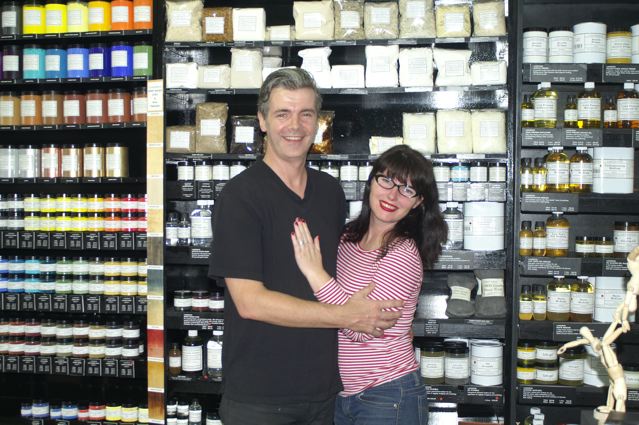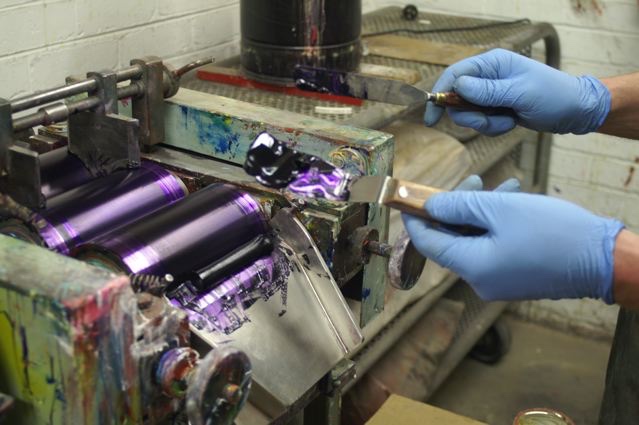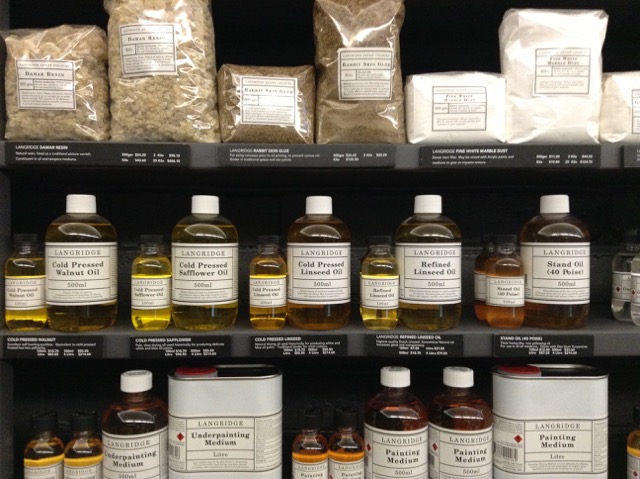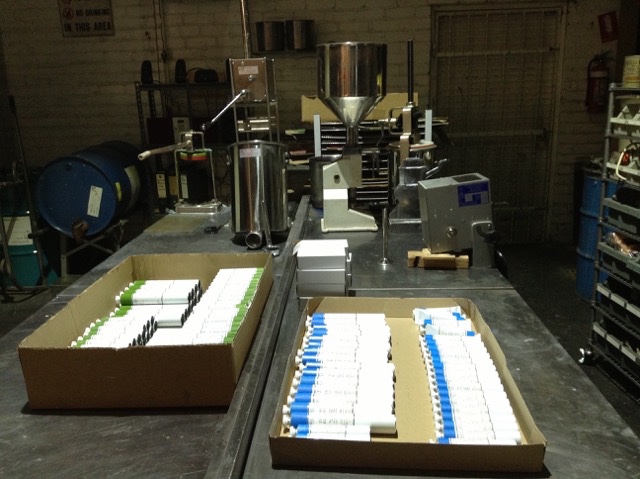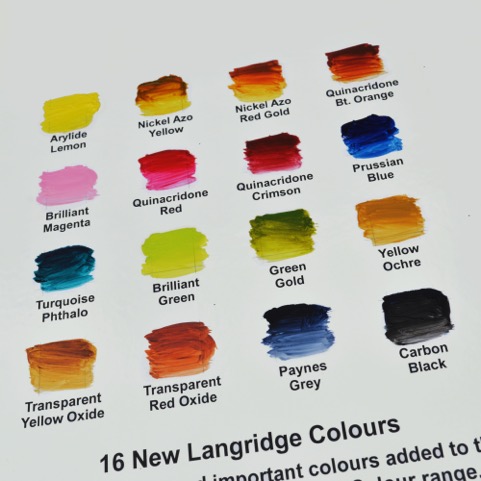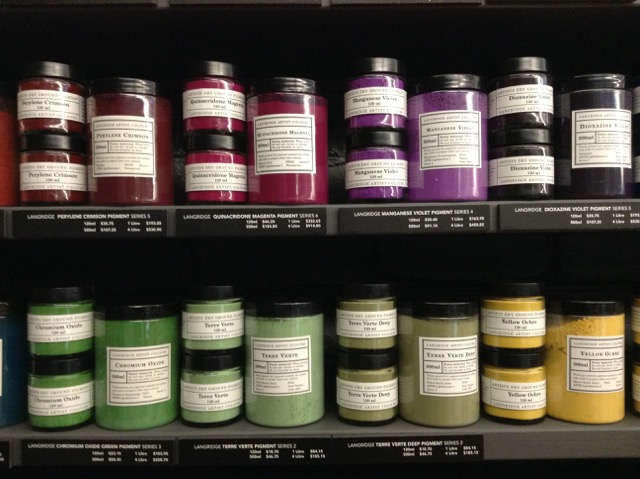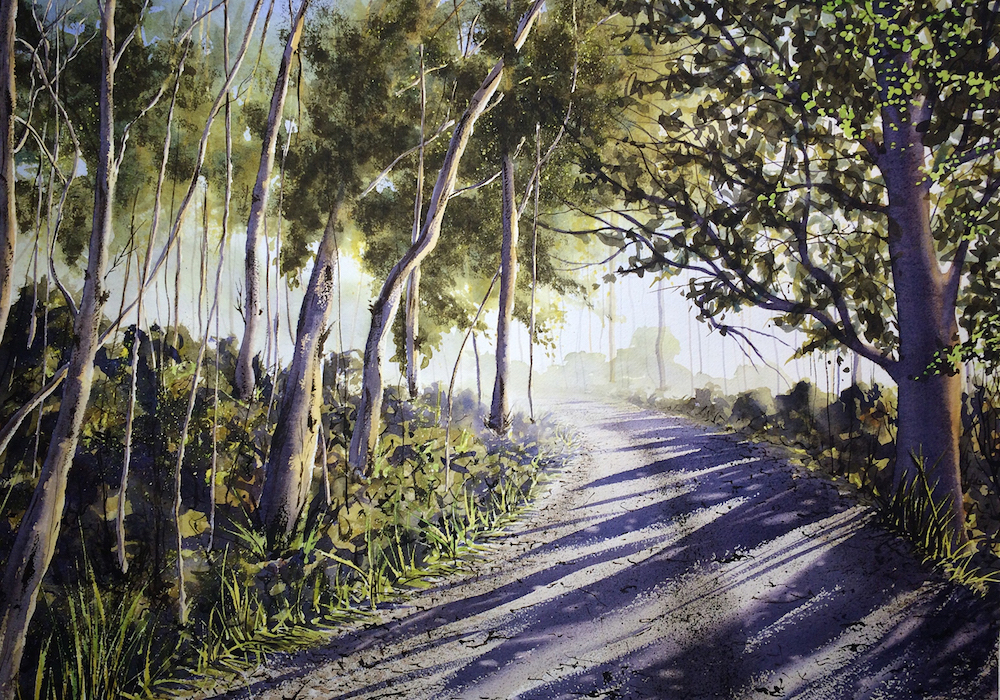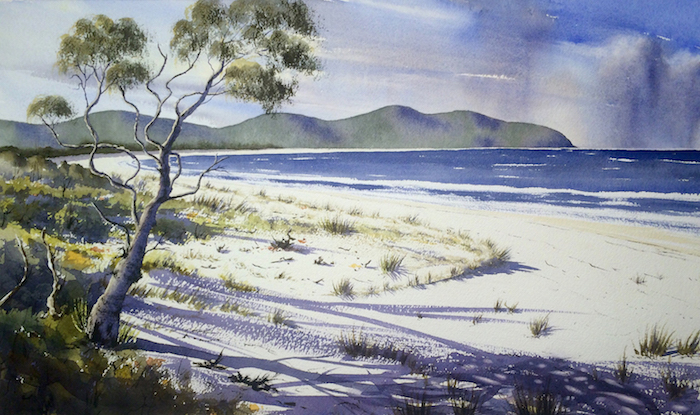The post Infinity and Beyond: Sakamoto and Kusama at the Byron Bay Film Festival appeared first on .
]]>Ryuichi Sakamoto: Coda
Composer Ryuichi Sakamoto’s search for new sounds – especially natural or “found” sounds – leads him to standing outside in the rain with a plastic bucket over his head, listening to the noise the drops make as they land.
The film Ryuichi Sakamoto: Coda, screening at the Byron Bay Film Festival, documents that obsessive search and how it fuels Sakamoto’s compositions, along with much else about the innovative musician, activist, writer, actor and dancer.
We watch – and listen – as he slides a violin bow across a cymbal’s edge, pounds a hollow log and plucks away at a piano that has been “warped and frayed” by its drowning in the tsunami that devastated Fukushima in 2011 – the focus of Sakamoto’s other preoccupation, the insanity of the world’s embrace of the nuclear option, be it for power or weaponry.
His artistry and activism are intertwined and the search always uncovers something more than sound: in the film it takes him, thrillingly, to the Arctic and to Africa. Seeking to answer the question “why are we such a violent species?” he travels to Northern Kenya, to the site where Turkana Boy – the oldest human remains – were found. “It’s where we all came from,” he says. “The African Exodus started with a family group of about 30 – our universal ancestors. We are all ‘African’. So the notion of race is a false concept.”
And in music he finds a commonality: “Africa is a vast continent but it has one universal rhythm pattern. That family shared one language, one music … the first sounds we made as humans, our original language. What songs were sung? What was our first language?”
He is struck by the “minimal and modest” community living there still, and gleefully reports recording “some great sounds” at the site, and using them “at length in my song Only Love Can Conquer Hate”.
Sakamoto is fascinated by water and in the Arctic Circle he tramps across boulders and snow to drill down through the ice to locate water running below – the sound of snow melting. He is “fishing” for the sound, he says, and records it, capturing “the purest sound I have ever heard”. He incorporates these pellucid tinkles into a later work, Glacier, along with the tingshas, or Tibetan hand cymbals he plays within that wind-swept realm.
This mixture of natural sounds and instrumentation creates “a sonic blending that is both chaotic and unified”, and segments of it within the film, alongside his calm and modest musings, make Coda an enriching aesthetic and meditative experience. For the sounds all have a significance beyond the merely aural – in the Arctic he is “at the frontlines of global warming” the melting snow below the ice a sound from a pre-industrial age, when the Earth was a healthier place. Footage of these expeditions pre-dates a diagnosis of throat cancer in 2014 – something that made him put a compositional project on hold, and indeed stop playing altogether.
But in their expansiveness – in the breadth of Sakamoto’s curiosity and wonder at nature – they mirror the expansiveness that comes as he re-emerges into creativity, into composition once again, despite the cancer.
A humble heroism is revealed: while ill he remained active in the anti-nuclear fight, and towards the film’s end he is brave enough to enter the contamination zone around Fukushima, and walk along the seafront, his Geiger counter going off the scale. The camera circles him repeatedly, expressing the giddy sensation of absorbing the unbelievable reality of a radio-active ocean.
It is a gross example of humanity’s impact on nature: Sakamoto sees that impact everywhere, even in the magnificent piano he composes on – an instrument only made possible by the Industrial Revolution which created machines capable of exerting the tremendous pressure needed to bend the wood out of its natural shape to suit the tastes of humanity.
The tsunami piano takes on a new significance: a chord he has played on it leaps out as he is listening to his latest composition. It sounds damaged, melancholic – a bit like the composer himself – but fits perfectly into the musical work. And, he suggests, the piano’s transformation in the tsunami is one in which nature reasserts itself, slowly taking the man-made object back to its natural state.
Sakamoto is probably best known in the West as the composer of scores for films such as Merry Christmas Mr Lawrence, The Last Emperor and The Sheltering Sky, and these are lovingly referenced here. But his work since, and even very recently, is more significant: richer and more meaningful.
Ryuichi Sakamoto: Coda will be of interest to anyone concerned with current Japan, or with nuclear power, or even those interested in witnessing a man’s response to cancer. Fans of his music will gain an understanding of the beautiful spirit of its creator.
For them, and all music lovers, and anyone interested in the creative process, it is especially mesmerising.
By Digby Hildreth
The Infinite World of Yayoi Kusama

Yayoi Kusama is revered the world over for her extraordinary repetitive patterns and her ‘dotty’ paintings.
Kusama – Infinity, a 17-year project conceived by American filmmaker Heather Lenz, brings Japanese artist Yayoi Kusama’s fascinating journey to life through rich imagery, archival material interspersed with great snapshots from 1960s America—media imagery, archival video footage and photographs—together with short interviews with key museum figures and Kusama’s long-time friends and associates. Importantly, the narrative includes readings and interviews with the artist and revealing insights into her art practice. The film presents a chronological overview of a colourful life—a story of struggle, of hard times and above all, one of fierce ambition.
Today, Yayoi Kusama (b.1929 Matsumoto, Japan) is the most successful living female artist, although this is a relatively recent accolade. It is only in the past 30 years of her prolific career that she has gained greater recognition for her contribution to contemporary art. Her practice is far-ranging: painting, sculpture, fashion designer, installation, collage, performance art, film, poetry, novels and anthologies. In 1968, she starred in her award-winning film Kusama’s Self-Obliteration (directed by experimental filmmaker Jud Yalkut). In 1969, she opened a boutique and in 2012 co-created the Louis Vuitton + Yayoi Kusama Collection.
Kusama – Infinity affirms the artist’s important contribution to the story of art; her unrelenting desire to succeed (against the odds)—with little support from her family (and eventual repudiation), many years of patchy interest from gallerists, ongoing illness and intense competition from the male-dominated art scene in 1960s New York.
Central to the narrative is the formative New York years (1958–73). Lenz acknowledges Georgia O’Keeffe’s importance and the adoration Kusama received from the reclusive genius Joseph Cornell. While Kusama failed to achieve the fame she so eagerly desired in the 1960s and a fraction of that enjoyed by her male counterparts—Andy Warhol, Claes Oldenburg, James Rosenquist, Jackson Pollock— she remained loyal to her practice, consistently depicting her obsessions and inner torments.
Following her move to the United States, Kusama began producing Infinity Nets paintings; in the early 1960s, soft sculptures (continuous productions of her fears—the phallus—in an attempt to self-therapy); in December 1963 her first installation Aggregation: One Thousand Boats Show (which inspired Warhol); and less than three years later, her ground-breaking Peep Show/ Endless Love Show (first Infinity/mirror room). From the mid-1960s Kusama was staging Happenings (often anti-war/pro-peace performances incorporating her trademark dot painted onto naked performers) that attracted much publicity in the US and Europe and a backlash in Japan.
Lenz’s film begins and ends in Japan—from a prosperous, dysfunctional family, having a troubled childhood and experiencing frightening visions from a young age, to her return to Japan in 1973, decline in health and self-hospitalisation (to this day her place of residence) and return to a fervent art practice and ultimately global recognition.
In the years following her move back to Japan, Kusama’s work received little attention. In the 1980s there was renewed interest in her work and this increased in the 1990s. The final chapter of the film outlines some key exhibitions: from ‘Yayoi Kusama: Retrospective’ at the Center for International Contemporary Arts, New York in 1989; to the 45th Venice Biennale in 1993 (Narcissus Garden was her unofficial entry in the 1966 biennale) where she was the first artist to stage a solo exhibition in the Japanese pavilion; and ‘Love Forever: Yayoi Kusama 1958–1968’ a major retrospective, which opened at the Los Angeles County Museum of Art (1998) and travelled to the Museum of Modern Art, New York, the Walker Art Center and the Museum of Contemporary Art, Tokyo.
Today, museums are eager to exhibit her work: high visitor numbers are guaranteed. Her Infinity rooms attract long queues and when on display her work The obliteration room (2002–present, in the Queensland Art Gallery’s collection) is obliterated in days as visitors clamour to stick coloured dots to a white room filled with white-painted furniture. Her audience is far-ranging, and her work lends itself well to an ever-increasing world of social media users—museum visitors eager to capture themselves in her wondrous infinities.
Kusama tells the story of climbing the Empire State Building soon after first arriving in the city in the late 1950s and there deciding to conquer New York. Whilst she did not achieve the success she craved during this stage of her career, Kusama: Infinity is proof that now she has conquered the art world. With her ever-increasing popularity , the release of Lenz’s film is timely.
Emily Gray
The Byron Bay Film Festival runs from October 12-21. Kusama: Infinity screens at 7.30pm on Thursday, October 18 at Byron Community Centre. Ryuichi Sakamoto: Coda screens four times at the Festival – in Byron Bay, Brunswick Heads and Murwillumbah. Program and tickets at BBFF.com.au
The post Infinity and Beyond: Sakamoto and Kusama at the Byron Bay Film Festival appeared first on .
]]>The post Creative Collaboration Captures the Heart and Soul of Lismore appeared first on .
]]>For two years, Wagner and Derrett – both well-known professional photographers have spent their time looking for people, who: “at first sight we found interesting”, says Wagner, and the results of which have produced a diverse and intriguing body of work. Throughout that time they’ve photographed over eighty locals, mostly unknown to them. The sum effect of this project is very much a ‘portrait’ of Lismore.

Rosemary Bashford. Born 1932 in Sydney, New South Wales.
‘My name is Norman Lindsay and I would like to paint you for the Archibald and I promise you your life will surely change’.
Rosemary grew up in a family surrounded by 17th Century art, exquisite furniture, and fine surrounds. Leaving school at fifteen she attended business college, worked in the GPO pay office, was a legal secretary, briefly did nursing at Royal Prince Alfred Hospital, and later became the social editor of the Double Bay Courier. One day when she was sixteen years old while travelling on a tram Rosemary was aware of the attentions of a young man. He approached her.
He was a young artist called Norman Lindsay and he wanting to paint her for the Archibald. Despite much consultation with the family in the end her parents said ‘no’.
Aged twenty-one she travelled via sea to visit family in Devon. On the return trip Rosemary met her husband Ronald Bashford and in 1954 they married. Rosemary and Ronald had seven children. Eventually deciding to leave the city, Rosemary, Ronald, and their children, left the city moving to a farm west of Kyogle. In the 1970’s the house was destroyed by fire and rebuilt. Since the 1980’s Rosemary has lived in South Lismore. Rosemary’s love of art continues. She adores her garden which is very French and boasts over seventy old worldly scented rose bushes.
I have heard Rosemary referred to as Lismore’s Katherine Hepburn.
The painting on the wall behind her is of Rosemary, her daughter Anna, and her mother Lalla. It was painted by her son Paul Bashford (de Grey). Rosemary was the first person I photographed for this project. (Photograph: Jacklyn Wagner.)
In many ways this project is an updated version of Jacklyn’s 2001 ‘Southies’ project, based around the inhabitants of South Lismore. This body of work, now residing in the Gallery’s permanent collection, continues to be one of the gallery’s most cherished groups of work – due to the loving portrayal of the subjects. Heart and Soul, which again will enter our collection at the conclusion of this exhibition, thanks to the generosity of the artists, will no doubt continue to do the same.
Wagner and Derrett have stated a mutual respect for each other’s work, and both have had an unwavering commitment to the project. This has resulted in a relatively seamless exhibition in which both photographers are proud to have been involved.
The project has also been embraced by their photographic subjects with a sense of anticipation and that they are part of the exhibition: “Opening night will be something special. I think it will be very much an exhibition for the subjects and their families,” says Wagner.

Alethea Jones. Born 1979
A passionate wonder-woman who wants to see women break the glass ceiling, especially in film making.
Alethea was an Alstonville girl who showed great ability in dance, acting and singing. After high school she did a degree in Theatre, Acting and Film Making at the University of Southern Queensland. She spent time making films for
advertising. Alethea won the prestigious Tropfest with a quirky short film, Lemonade Stand.
This projected her to Hollywood, Los Angeles where she now lives making TV series and movies. She recently made a full cinema film called Fun Mom Dinner with Toni Collette and is working on a number of major feature film projects.
When she comes home we always have a photoshoot and have been working on a series of pictures of Alethea wearing her mother’s ballroom dancing gowns. She wanted this photo taken in her parents’ lounge room, wearing a dress from a Ballroom Competition and under the painting by her sister Matina, a distinguished artist who was tragically killed in a car accident near Alstonville some years back. (Photograph: Peter Derrett)
|

Brodie Buttons. Born 1993 in Cooma, New South Wales.
I once chased a girl to an Irish dance but fell in love with the music and not the girl.
Brodie is of Australian and Sicilian heritage. Until he was sixteen Brodie and his younger sisters were home schooled by their mum. As a boy he remembers school work finished early in the afternoon followed by playtime in the bushland
adjoining their home. When he was fifteen Brodie was hit by a car and hospitalised. For the first time in his life he thought deeply about mortality and life. At sixteen he enrolled at the Lismore Conservatorium of Music studying
contemporary music for two years. Playing in a band he soon hooked up with the local musicians and formed the Irish and bluegrass group, ‘The Button Collective’. A bit of a gypsy wanderer Brodie likes to live in the moment and has
accumulated a large network of friends and contacts up and down the East Coast. Now he mostly writes songs about love and losing one’s religion and aims to create one new piece of music a month. He writes songs people can relate to in small and bigger ways. Either way is fine.
I need to create to function.
One day I would like to build a small shack, remote, safe, and somewhat isolated.
Brodie is still busking, living the transient life and was making his way to Sydney last time we spoke. He visits Lismore every few months.
I can’t stay away too long. (Photograph: Jacklyn Wagner)
The post Creative Collaboration Captures the Heart and Soul of Lismore appeared first on .
]]>The post Brooke Clunie’s ceramics – and her first exhibition appeared first on .
]]>Brooke is celebrating 25 years behind the potter’s wheel with her exhibition ‘Stillness and Time’ at the Northern Rivers Community Gallery in Ballina from 29 August to 23 September. The stunning exhibition features Brooke’s ceramics accompanied by photography by Demetre Minchev.
“I wanted to acknowledge my tools with both photography and my pottery. I’ve always felt photography and pottery are similar with their immediacy and truth,” says Brooke. “It’s something I want to celebrate after being a professional potter for 25 years – something I still can’t believe.”
For the last eight years, Brooke Clunie has showcased her work from her own studio gallery, the Red Door Studio, in Fernleigh.
“I purpose-built my studio gallery so people can come and see me at work, at the process of making and the many steps involved. Ultimately, I hope this creates a relationship with pieces purchased and a meaningful shopping experience,” she says. “I think people are genuinely seeking a connection. We have been so disconnected by mass production that we’re longing to get back in touch with the crafts.”
She attributes the growth she has experienced over the last five years to this, as local restaurants and cafes have also sought connection through locally sourced foods and the wares on which they serve them.”
Presenting her ceramics with images was an idea that developed as Brooke sat at her wheel and created. “The repetition, the circular motion and the hum of my wheel with my hands continually creating absorbing this quiet energy and my two hands connecting and dancing with each piece, it all fed into the idea of making a moment of stillness – and so the exhibition unfolded. The images by Demetre Minchev capture my creative journey.”
Photographs by Demetre Minchev
‘Stillness and Time’ is showing at the Northern Rivers Community Gallery in Ballina from 29 August to 23 September.
The post Brooke Clunie’s ceramics – and her first exhibition appeared first on .
]]>The post Making her Mark – artist Jess Lacroix and her No Bad Days appeared first on .
]]>“I was born in Ottawa, and both my brother and I grew up bilingual,” artist Jess Lacroix tells me, explaining the trajectory that has taken her from Ottawa to the Brunswick Head house where she’s currently living and working from. “I went to an arts-based school in Ontario, and when I was looking at Universities, I really liked the courses that the ANU in Canberra offered,” she says. “Originally it was meant to be for one term, but I got so involved with photography, drawing and textiles that I completed my degree there, with a minor degree in art therapy.”
Jess’s final project saw her produce a body of skatedecks, one for each city in Australia made from a wood source unique to each region, celebrated with hand-etched maps of the city on each deck
Back in Canada Jess set about throwing herself into an an arts career, becoming a full-time arts teacher, founding an arts program for children, as well as offering one-on-one visual sessions with children. “I found myself just constantly expanding,” she says. “I became really interested in the idea of art as therapy as well, so I started to do pop-up shop tutorials, I ran skype sessions, did long-distance education with my clients, and founded my little business NoBadDays, to give back to charities.”
If it sounds as if Jess keeps herself exceptionally busy – well, you’d correct in that assumption. “I’m just a firm believer in never living the same day twice,” she says. “If you’re not a passionate believer in something, why do it? I want to be inspired by the unknown, not by a 9-5 routine. Someone very close to me passed away recently, and that really confirmed for me that life is too short to waste – I want to live every moment with heart. He lived on the south coast, and grew a tea plantation, moving into creating artistic tea gardens, and then a creative collective for artists.”
This lifetime around, Jess was beamed in with a need to make art: “Art has always been apart of my life,” she says. “Since I was a child I can remember holding a pencil or paintbrush or anything that can make a mark – art is who I am, in every shape, way, and form; no matter where on the wild globe my itchy feet and knack for a one-way ticket lands me.”
Jess was only 16 when her peripatetic lifestyle began, travelling to California for a summer on an arts scholarship. “I was on my own, between San Francisco and LA, and I loved it…I started to experience a bad case of itchy feet,” she laughs. “Since then I’ve been to Iceland, all through the US and around Australia. I’ve been very lucky to connect with all sorts of artists on my journey included a film photographer who was shooting in the Grand Canyon, and I got to work with him.”
Byron Bay, she says, was on her ‘bucket-list’. “Every uni break I’d travel in Australia,” she says. “I took a large format camera to Uluru and lived there for a month photographing sunrises and sunsets. I had an art show from those travels in Melbourne and one in Hobart, but I’d never been to Byron, but then by a fluke occurrence, I met the manager of the YAC in Byron. She’d seen my work and asked if I would volunteer my services to do a mural – it was exactly the kind of thing I’m passionate about, so that was that – I came up here, loved it, and now I’m based up here full-time.”
Grounded, an acrylic paint mural that now graces the inside of the YAC big space, brings the native Australian paperbark tree indoors. “I wanted it to surround visitors with the endless nourishment and grounding properties of the exquisite Melaleuca Quinquenervia tree,” says Jess.
The work is created through layers – the richness in movement of the painted trees and its unconstrained roots connecting with the outside native flora and fauna when the painted doorway is opened to the bushland. And since she’s completed the YAC mural, she’s also created one for the Torakina Café in Brunswick Heads, as well.
Although Jess’s life (her partner is a local musician) and work is based in Byron at the moment, she misses her younger brother Dakota and her mother terribly, and travels home to Canada whenever she can. “I do try to organise shows so I can go back for a few months,” she says. “I just returned from a visit in Canada to see my family but I also organized a summer pop-up shop selling my hand-silkscreened t-shirts, and installed large format photography and skate-decks in various gallery spaces. What is odd though is that from the moment I got to Canberra, part of my heart has always been here. The art scene has simply enveloped me every time.”
As she describes her art practice it’s almost hard to keep up with her. “I build and design skateboard decks, from scratch – pressing, moulds, veneers, scraping, shredding, and carving so I can get them just how I want them. I hand paint customized surfboards, I sketch and scribble up album art for musicians; I do film photography and videography; I do t-shirt silk screening – building all my own silk screens – palm trees and pineapple skulls is the kind of vibe my work has; I do murals, jackets, cards – anything that grabs me really,” she says.
From spontaneously mucking up her surfboards in Byron Bay to spray painting deck art on vintage Z-flex’s in New Zealand, “Travelling solo through my art has totally taught me to dare to just dive in, every time, and go wild with the madness regardless of what looks good on paper. I strive to do something that truly matters, with my art. That’s everything to me,” she says. “I feel like if your art can touch or inspire or do something, anything, for one single person in a crowd, that makes it all pure gold and worth all the blood, sweat, and tears.”
To say that this young artist is inspirational is putting it mildly. As they way, watch this space.









Jess’s Instagram: @nobaddays_est.never
The post Making her Mark – artist Jess Lacroix and her No Bad Days appeared first on .
]]>The post Art Piece’s 30 x 30 reaches 10, with 2 joint winners… appeared first on .
]]>Hundreds of artists and friends packed the gallery and waited for the announcement of the winners. Judges Susi Muddiman OAM and artist Amanda Penrose Hart, winner of the 2017 Gallipoli art prize had considered all 230 pieces and after much deliberation decided to equally divide the First Prize between two artists.
Joint First Prize
Vanessa Stockard
Pleasure and Pain
acrylic on board
30 x 30 cm(framed)
Joint First Prize
Kat Shapiro Wood
Hover
encaustic on board
30 x 30 cm
Other awards
Finalists’ Exhibition 24th November 2017 – 22 January 2018
The post Art Piece’s 30 x 30 reaches 10, with 2 joint winners… appeared first on .
]]>The post Horses and humans – and the shadows between appeared first on .
]]>There’s something so enticing about the drive to The Channon. Enveloped by green rolling hills, the small village offers visitors an eclectic offering of outings – from bushwalks up to Protestor Falls in the Hills, to the much-loved Channon market on once a month.
For its size, The Channon punches well above its weight in the art stakes with its beautiful Teahouse gallery in the tiny village, and with a large population of practising artists.
Artist Andi Neilands had a change of direction a few years ago, when she left behind a long career at TAFE teaching IT and 3D modelling and animation to study art. This show, Virtual Shadows, is the result of her advanced diploma with an emphasis on light and shadow to create edges, form and volume.
It’s a cohesive exhibtion – it could perhaps be called humans and horses, since the works are of men, women and horses. But it’s the women who have the relationship with horses, the men are incidental and somewhat exterior to the main body of the work. If a shadow of Neilands former career shows itself, it’s in the precise techniques she’s used to replicate the works in various media, so that a drawing becomes a painting, becomes a bronze. (Many of the works are available as prints or reproductions.)
One small area of the exhibition concentrates on one peson – artist Ken Johnson cialis 20mg prix who acted as a personal mentor to Andi – particularly whilst she was coming to grips with the art of sculpting. Johnson is portrayed in a bust and on paper, and Neilands pays tribute to Johnson’s emotional depths in all three works.
One of two of the most expensive work in the exhibition, a bust of Bucephalus, Alexander the Great’s warhorse, is carved out of white carrara marble from the Michelangelo quarry. It has an almost transluscent quality, and the proud horse’s head takes an easy pride of place. Interestingly its ‘shadow’ are smaller heads printed in plastic by 3D printing. From the most natural, to the most unnatural material on the planet. Both, these days as seemingly durable as the other.
The messages behind the mediums are subtle. Less subtle but interesting to a fellow horsewoman, are the works depicting the sometimes almost erotic, always highly emotional relationship between women and their horses. My personal favourite is a small clay maquette of a horse lying down a woman sitting by its stomach with her head on her lap, and the horse’s head gently turned towards her. The title of the work is RUOK? and for me it’s a reminder of how, although as a human it’s my job to look after my horse, every now and then in my dark days my horses have turned to look after me.
The imperative for an artist behind a work of art is always fascinating. As the viewer what do we see? As the artist, what did the creator intend? Perhaps the most personal of all is a bust of Neilands’ father – My Father, My Hero – drowned at sea in a boating accident in 1957 having saved the lives of Neilands, her sister and her brother. The bust of her father held great emotional signifcance for the numerous descendants of the tribe at the opening – reinforcing the notion that in any form of art it is the story that is contained within it that is the emotional connection to the outside world.
I will be interested to see the expansion of this artist’s work.





Virtual Shadows is showing at The Channon Teahouse & Gallery in Standing Street until December 10.
For more information on her works go to andineilands.com or contact Andi on [email protected]
The post Horses and humans – and the shadows between appeared first on .
]]>The post Coffs Harbour Regional Gallery STILL finalists announced appeared first on .
]]>“We’ve been bowled over by the number of entries and their variety,” says Gallery Curator Jo Besley. “Changing the Award to welcome entries in all media has opened the doors to a much wider field of artists working in all types of contemporary still life. It’s exciting to see that STILL has – in its very first year – been recognised as an important and nationally significant opportunity for artists.”
The overall winner will receive $20,000 and the winner of the People’s Choice Award will take home $5,000. Local Coffs Harbour sponsors support the award. Mercedes Benz Coffs Coast is the Major Sponsor alongside Supporting Sponsors Slater & Gordon, Saso Creative and Moving Art.
A total of 63 artists have been shortlisted. The selected artworks include painting, drawing, photography, printmaking, ceramics, glass, sculpture, video, printmaking and textiles.
The 2017 finalists are: Tony Albert, Louise Allerton, Kelly Austin, Tanya Baily, Elie Begg, Annette Blair, Rene Bolten, Mechelle Bounpraseuth, Terri Butterworth, Fran Callen, Tom Carment, Angela Casey, Tiffany Cole, Karl de Waal, Trisha Dean, Mary Donnelly, Scott Duncan, Sarah Edmondson, Nicolette Eisdell, Merran Esson, Ben Fayle, Guy Gilmour, Sarah Goffman, Ronnie Grammatica, Linda Greedy, Colleen Greig-Canty, Vanessa Holle, Alana Hunt, Susan Jacobsen, Laura Jones, Helle Jorgensen, Paul Kalemba, Laura E. Kennedy, Myriam Kin-Yee, Zai Kuang, Michael Langley, Sam Leach, Kellie Leczinska, Alison Mackay, Josh Mackenzie, Kiata Mason, Julian Meagher, Robert Moore, Stephen Nothling, Susan O’Doherty, Sarah O’Sullivan, Sassy Park, Victoria Reichelt, Elvis Richardson, Damien Shen, Brendan Smith, Tim Snowdon, Richard Spoehr, Vipoo Srivilasa, Nathan Taylor, Samantha Thompson, Anselm van Rood, Prue Venables, Lilli Waters, Kati Watson, Greg Weight, Mirra Whale and Cleo Wilkinson.
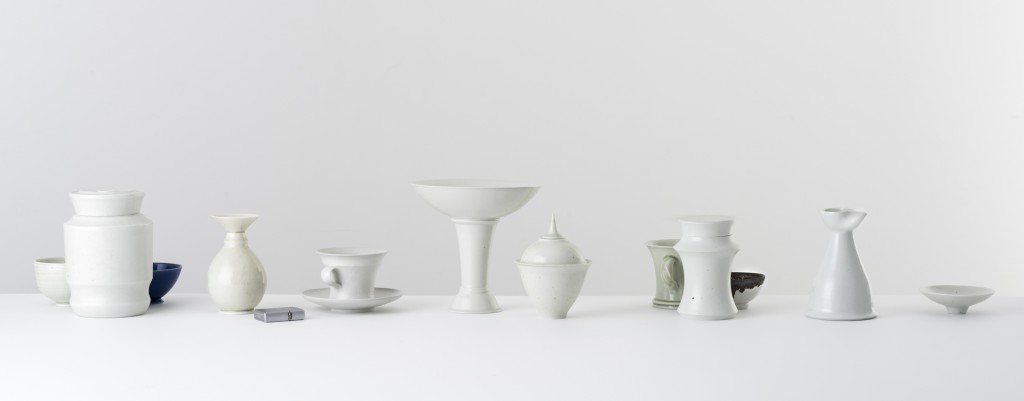
Richard Spoehr: Between Mind and Material, 2017. Handmade porcelain, metal found object / group of 3D objects. Courtesy of Stella Downer Fine Art.
The shortlisting panel comprised Director of Lismore Regional Gallery Brett Adlington, Sydney art collector and former board member of the Museum of Contemporary Art Lisa Paulsen, along with Coffs Harbour Regional Gallery Coordinator Cath Fogarty and Curator Jo Besley.
The award itself will be judged by Lisa Slade, Assistant Director Artistic Programmes, at the Art Gallery of South Australia.
The exhibition will be on show from November 24 2017 – January 18 2018. The official opening will be Saturday November 25 2017. People’s Choice voting begins on Thursday November 23, 2017.
Media Contact: Sara Hinds, Senior Communications Officer, 6648 4093/0407 227 818
Council Online: www.coffsharbour.nsw.gov.au
The post Coffs Harbour Regional Gallery STILL finalists announced appeared first on .
]]>The post Time and Tide – Robyn Sweaney shortlisted for the Wynne appeared first on .
]]>The Wynne Prize is awarded annually for ‘the best landscape painting of Australian scenery in oils or watercolours or for the best example of figure sculpture by Australian artists’.
This open competition is judged by the trustees of the Art Gallery of NSW. Finalists are displayed in an exhibition at the Gallery (although in the early years all entrants were hung). Many winning paintings have become icons in Australian landscape art, entering the collections of public galleries, including our own.
The prize was established following a bequest by Richard Wynne, who died in 1895, and first awarded in 1897, in honour of the official opening of the Gallery at its present site.
The Archibald, Wynne and Sulman Prize finalists and winners are on show at the Art Gallery of New South Wales until October 2, 2017.
The post Time and Tide – Robyn Sweaney shortlisted for the Wynne appeared first on .
]]>The post Tea with the Colourman appeared first on .
]]>Early in the 90’s, David Coles moved from England to Australia bringing with him his passion for pigments, his expertise in art supplies and his youthful determination. What he could not know at the time though is that this red continent would offer him something most unexpected and surprising: a desire for new colours.
David’s first factory’s location – on Langridge Street – gave his company its name and, despite rather what he laughingly calls “bohemian” beginnings, hard work and excellence always flourished there. Manufacturing professional quality oil mediums, varnishes and grounds to supply artists with artist grade dry ground pigments and other quality raw materials kept David happy and busy for nearly two decades.
But being the invisible medium of the oil paint world was not his long term dream. Urged on by artists who told David they wanted a paint of the same quality as his mediums, Langridge’s Handmade Oil Colour finally came on the market in 2011. The company started its foray into paint modestly, with 32 on the initial production line, and eight extra added 18 months later. That was only three years ago, and last year they added 16 new colours, with the intention of having 80 colours on their final list.
This May, David is celebrating the first quarter of a century of his ‘young’ company – young in the colour world that is – with a delightful exhibition about pigments, colours and paint making, Chromatopia, opening at Tacit Contemporary Art space in Melbourne on May 31.
In a perfect match for a paint-maker, David’s partner Louise Blyton is an artist who runs an art store in Melbourne – full of all the Langridge products and the Golden acrylics David distributes here in Australia. Their enthusiasm for their projects and creations is infectious – and I’m increasingly intrigued, as they talk about their love of paint, about the title of Master Paint-maker. It certainly isn’t an honour bestowed on everyone. David tells me that the name reflects the dedication involved with the formulation of paint from scratch. “Being a Master Paint-maker as well as the founder of Langridge Artist Colours, I’ve grown very sure about following my philosophy of what paint should be. For me paint should not only have the highest pigment load possible to so that artists can get as much colour of the paint as possible, but it should also have a certain feel,” he says.
As he describes the quality of paint, it sounds almost like a chef describing a cooking method or food. “The paint is going to be reflective and honest about the way the pigment actually is and creates certain qualities. You have some colours that are naturally soft and quite fluid. Some which are quite buttery,” he explains. “Some are quite stiff, some clotted. It’s the pigments’ action upon the vehicle used creating that. You don’t see that with most of the other paints out there because they use some additives, mostly stabilizers, in quite large quantities which, in essence, homogenizes and evens out the natural qualities of each colour. I think that a pretty important part of an artist’s craft is understanding how paints operate slightly differently from colour to colour because they reflect what the pigment is actually all about.”
Despite the title however, it’s not exactly a degree you can go somewhere to obtain. This title is really learned on the job. “There’s nowhere you can go and learn to become a Master Paint-maker,” says David. “I learned a lot of my craft when I went to work for Roberson & Co. back in London in the 80’s, but in the end, I really learnt it on the mill. When you’ve got wads of colour coming at you from the triple roll mill, you start to learn. For example, with modern colours where you have to tease the colour, the pigments need to be separated from each other much more gently whereas the older inorganic pigments, like the Cadmiums and the Cobalts, are much easier to disperse – and something like Zinc White, which is a very soft pigment, needs hardly any work done to it to actually make it into a dispersed paint. And when we talk about dispersion, I’m talking about separation of the pigment particles evenly throughout the actual vehicle so that all the pigment particles are separated from each other and coated evenly in the minimum amount of oil possible to make it into a paste. Which is what we call paint!”
If there is a range of colours that are perhaps more difficult than others to work with, it’s the earth colours. “Some of my children are very obstinate,” David laughs. “The Umbers are very naughty. They’re thirsty pigments so they need a lot of oil. Our Siennas are naturally of a gritty consistency and that’s not because we’ve under-milled them but because that’s the nature of Sienna pigments. The Earth colours, because they’re naturals, have their own real individual qualities.”
I’m intrigued by the use of the word ‘our’, but as David explains he now has long term relationships with the major pigment manufacturers around the world. “I buy from the Germans, the British, the Americans, the Taiwanese, the Japanese, and we select pigments that are built to the specifications we need as artists. The most important factor is that they are not reactive with other painting elements, like solvents, that there is no solvability etc. and that they are highly lightfast. Also that, when they are dispersed, they have a working quality that makes a paint artists can work with,” he says. “There are now a lot of pigments available that are surface coated. For example, these days most Titanium White pigments have some kind of surface treatment which allows it to be dispersed in different types of vehicles for different applications. We’re offered a vast variety of them and so we have to be ultra careful about what we choose. It would be very easy for someone to be waylaid and pick the wrong pigment. You have to know a fair amount about chemistry. Not that I’m trained as a chemist, I trained as an artist. So my starting point is always – are these colours artists will want to use?”
Originally David had imagined that he would become an artist. “In fact,” he says, “I don’t think I had any doubts about that – actually I still am an artist. I have a studio, I still go in the studio although not as much as I used to, but my art informs very much what and how I make the things I do. Also my conversations with fellow artists don’t stop at selling them or supplying them with materials, it’s a constant ongoing conversation. All my friends are artists. I go to their studios, gallery openings, and over dinner at home we might start talking about their painting. I’m very open to helping artists because it feels, naturally, the right thing to do.”
His Australian career came about by accident when he first visited Australia on a holiday while he was working for an art retailer in the UK. “I became aware of what was available to Australian artists. Obviously there were a couple of Australian manufacturer’s brands here. Having worked for Roberson & Co. and in their venerable art materials store in London, Cornelissen & Son, I knew a lot about art materials and the benefits/negatives of each raw material that goes into a manufacturer’s formulations and products.”
One of the biggest issues for David remains the use of linseed oil, which he uses as a binding oil for paint. “It’s magnificent,” he says, “but obviously it’s kept to an absolute minimum because used excessively, particularly in mediums, it promotes yellowing. The mediums that I could see here were basically, unfortunately, detrimental to the artists’ practice. So that’s why all of the Langridge’s fluid mediums are based on stand oil – polymerized linseed oil because it’s a non-yellowing oil. So I very quickly realised there was a gap in the market for a world-class medium for artists. Before I came back out here, I knew what I was going to do: set up an artists’ products manufacturing company in Australia. Even then I knew I wanted to make paint.”
David began his company by formulating mediums, rather than the more usual manner of creating paints for the simple reason that it was all he could afford to do at the time. “It took me seven years to be able to slowly find and buy all the machinery needed to start making paint,” he tells me. “The first mill I bought was a small mill. We still use it in the factory to make very small batches and often now trial batches. But it took me many years to be able to afford to get to that stage. So I started making oil paint mediums, which I formulated myself from scratch, again knowing what I wanted to get out of a medium for myself and what I knew was important for artists.”
Listening to David describing paint and pigments is fascinating. “Of course,” he says, “pigment is pure colour. Some disappear and we introduce more colours but, as a general rule, we stock and sell about a hundred pigments here because some artists want to make their own paint and because they are so delicious in their nature as pure colour. In the paint something has already been denatured. It’s colour with a binder and depending on the binder, it can alter the optical vibrancy of the paint. Ultramarine is a classic. You can see the pigment vibrate but when mixed with oil it becomes very dark. You have to add white to it to start to see that light come back into it. I’ve always been in love with pigments anyway. I remember when I was around eleven and my mother had opened up an art shop in Henley where I grew up, and one Christmas she gave me a set of pigments, just little 30ml pigment jars and it was for nothing else except to be able to look at them. Like jewels.”
David has also always been interested in the history of art materials. “I’ll experiment by making something using a 14th or 15th century recipe… at the moment I’m making a traditional walnut ink made from their husks,” he says. “They’ve been fermenting in the pot for about two years now and the fermentation breaks down the sugars which creates a darker colour. I’ve also made a whole set of traditional lake colours from dyes. Things like Brazil wood and turning it into pigment and in the same vein I want to make some genuine madder but these are not commercial exercises this is purely out of curiosity and to understand I suppose how pigments used to be made and probably from that realise over again how incredibly lucky we are now. I’ve always been a big believer in this idea of science and art, technology and art actually, working hand in hand. I mean the history of technology is always written out of the history of art in regards to why artists started to paint in a particular way. Often it has to do with a technological breakthrough not an aesthetic or cultural breakthrough.”
What David is constantly striving for is a quality of paint that can compete with the best in the world. And that, in turn, feeds into his desire to create paints that reflect Australia. “Do I think there’s room in the world for another paint? There are already quite a lot of brands out there,” he says, rhetorically. “Where I think Langridge can make a difference is because of my interest in these modern highly chromatically intense colours. Creating a palette that reflects the Australian light in a way that light floods and energises the colours that it strikes and which comes from the dryness of the continent. There’s very little moisture, there’s very pure light and the scale of the skies are enormous. It doesn’t really afford the opportunity for much shadow. And when you do get shadows, the shadows vibrate as well. They become violet and vibrate that way.”
He is determined to offer an Australian palette in his range. “I suppose for example, that Zinc Blue attempts to fill the colour space that used to be filled by the old Manganese Blue which is a pigment that has not been in production for almost twenty years,” he says, “and that particular blue is very relevant to the Australian sky and Australian water, especially ocean water which has that kind of brightness and again that lack of moisture, or perceived lack of moisture to the eye because of the blueness of the sky as it strikes a liquid material! It’s the same with our Cold Brown Oxide. It’s a blend that replicates a colour very useful for artists, an old colour that was Cassel Earth or Van Dyke Brown. Those pigments unfortunately have strong problems with regards to drying rates, they’re very erratic. So, once again, I wanted to create another blend for this colour so useful to artists in particular for creating receding shadows, etc. without those drying problems. Of course as we go to the 80 colours, yes there is going to be more blends. And then I’ve got to be extremely careful about why I’m making them. That’s why I’m interested in what we call our brilliant range. We already had Brilliant Pink, which is almost like a hot bubble gum pink and have proceeded with a Brilliant Magenta and a Brilliant Green and we’ll continue to expand that range. The philosophy of that range is to offer the kind of vibrancy of a fluorescent pigment, but highly lightfast. So, again, these non-real or unrealistic colours are there because I know artists find them very useful.”
Talking with David it’s easy to feel that there was a sense of destiny to his arrival in Australia and to his career. “Langridge did have a sense of destiny unfolding,” he agrees, “a whole set of coincidences, accidental meetings, that led to me very easily settling here. And it’s interesting about you mentioning it being an old continent because Australia is of course the oldest continent with the oldest continuous civilisation in the world, and it’s something that I’ve thought long and hard about in regards to Langridge: what is our relationship with that part of Australian culture? I’m not working with a traditional aboriginal palette but we have a lot of aboriginal artists who buy our pigments and some of the very bright colours. At this point in time though, most of the indigenous artists I’m connected with work in acrylic paint not in oil. So there isn’t immediately some kind of connection to the actual materials. For the pigments we have a constant interaction and dialogue with communities West, up North and in the Centre. Our oil paint is not something they are particularly interested in at this moment. Acrylic is probably much more sympathetic to their painting style: waterborne, fast drying.”
Which brings us to the question of whether, in this age of fast-changing technologies, something as ancient as oil paint can survive. David is sure it can. “Oil paint is here for the future absolutely. I’ve made oil pastels, oils sticks, compressed chalks, charcoals, gouache, drawing inks, even shellac based ones…I do it more out of a personal interest, a curiosity. I would love to make commercially soft pastels but, again, there is so much to be done with oil paints I’m not quite sure I’ll ever find the time. Not just the oil colours themselves, I’m constantly inventing and formulating new mediums and new products when I see a gap in the market. A possible new tool for painters. I have just developed a more fluid medium, which has a more slippery quality than some of our existing ones, and a high impasto medium. We’ve been experimenting with some glass bead and we’ve just released a new encaustic wax… a modern formulation of a very traditional recipe. Encaustic, at this moment in time, is back in favour. We have a lot of artists interested in working as encaustic artists. All the materials available had to be brought in from overseas but I knew we could produce here a product as good, if not better, than those imported products. And again because I worked with encaustic 20 years ago, and on and off since that time, I do understand the working qualities and what this product needs to be, as a tool for artists. So far the feedback from encaustic artists with lots of experience themselves has been extremely positive. We do believe we’ve created something quite unique. Something we could even launch onto a world market and it fits, of course, beautifully into our pigment colours so in a sense it closes the loop all the way back to the very beginnings of Langridge. 1992 to now. A completion of the first circle really.”
Photographs: Sabine Amoore Pinon and David Coles
Sabine Amoore Pinon runs Still @ the centre, an art store in Byron Bay, and is a fan of great art materials. Check out her supplies here: https://the-centre.com.au She also writes a blog about her interviews with colour men and women all over the world. Follow her on inbedwithmonalisa.com
‘Chromatopia’ opens on May 31-June 18 at Tacit Contemporary Art Gallery – 312 Johnston St, Abbotsford Victoria.
The post Tea with the Colourman appeared first on .
]]>The post Dave Sparkes – illuminating the East Coast appeared first on .
]]>Dave Sparkes has been involved in various creative pursuits for many years. He has been senior writer/photographer for the iconic surfing magazine, Tracks, for over 20 years. Sparkes has been painting watercolours for several years, concentrating mainly on plein air landscapes and seascapes. He won the Naturalist Division of The Pacific Palms Art Festival in 2012, and achieved a Highly Commended in 2013. He’s had several works published in Tracks and White Horses magazines, both having additionally published articles on his watercolour art. Tracks also recently featured his work in their “Two Hands” section, a monthly feature on emerging artists.
Sparkes grew up in Bondi Beach, and now lives in Byron Bay with his partner Tracey Turner. In between walking the dog and exploring the hinterland for natural swimming holes, he surfs, paints, writes and takes photographs.
Sparkes has had thousands of images and over 2oo feature articles published, and has interviewed many surfing luminaries such as Tom Curren, Occy, Sunny Garcia, Dave Rastovich and Mick Fanning. His photographs have adorned the covers of magazines in many countries, including the US, Australia, France, New Zealand, England and Spain, and most notably he photographed the cover of the 2005 US Surfer Magazine Photo Annual. His book of words and photographs, The Wave: Tales From the Impact Zone, was published to rave reviews in Australia and New Zealand by Hachette Publishing in 2011.
Sparkes’ upcoming exhibition, Illumination, will be showing at Byron Bay’s Lone Goat Gallery from February 3rd to February 15th, 2017. His first solo show will feature works created by Sparkes over the last 18 months, with a focus on his glowingly impressionistic landscapes and seascapes of the East Coast. Approximately 50 framed and mounted paintings will be exhibited, highlighting the artist’s fascination for sunlight and shadow, mist and atmosphere, and the whimsical realism of his watercolour vision.
ILLUMINATION – Watercolours by Dave Sparkes, Lone Goat Gallery, 28 Lawson St, Byron Bay, February 3rd – February 15th
Opening night Feb 3 from 6 – 8pm
For more information on Dave Sparkes go to: sparkesphoto
lone-goat-gallery-at-the-byron-bay-library
The post Dave Sparkes – illuminating the East Coast appeared first on .
]]>












